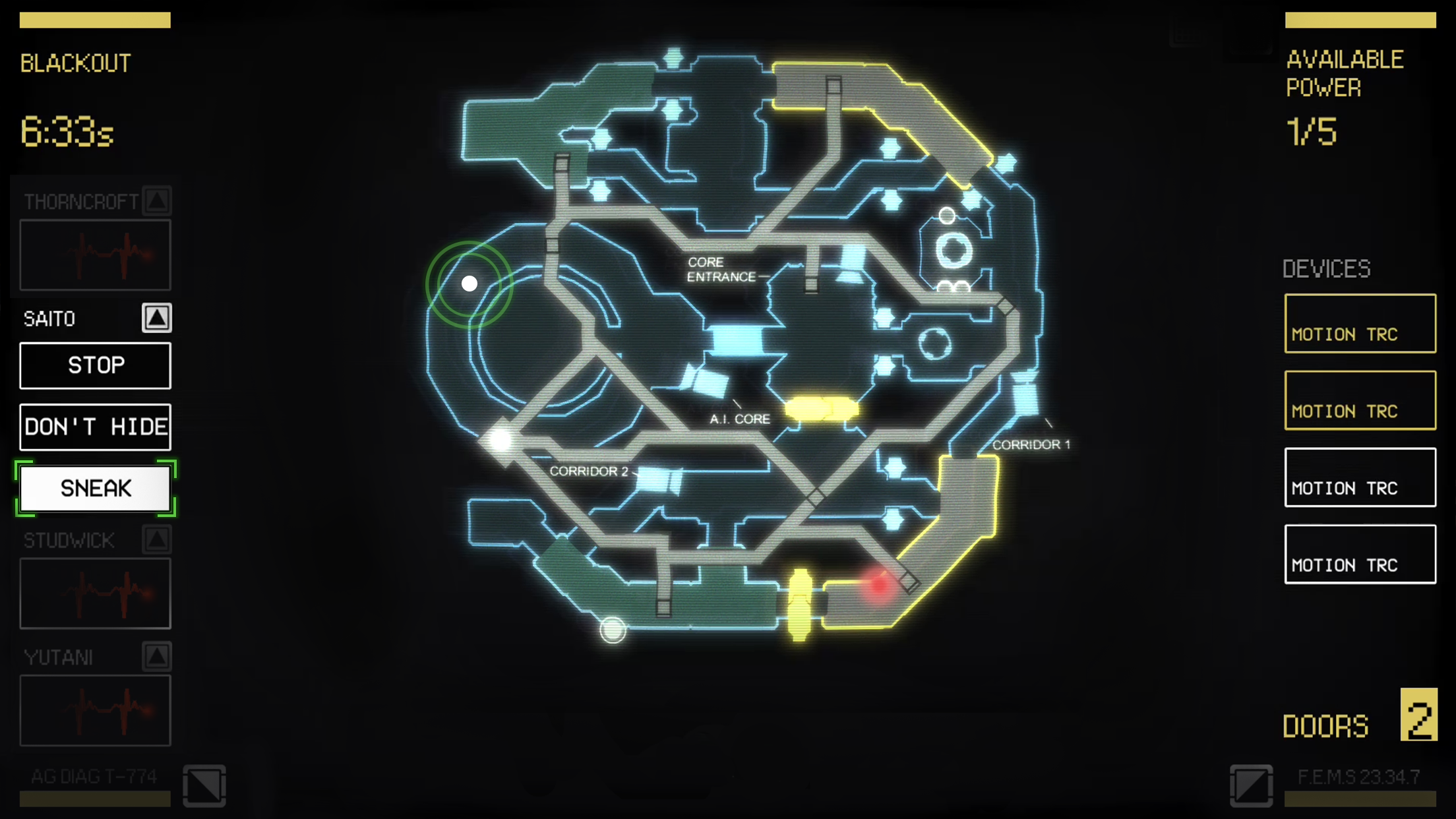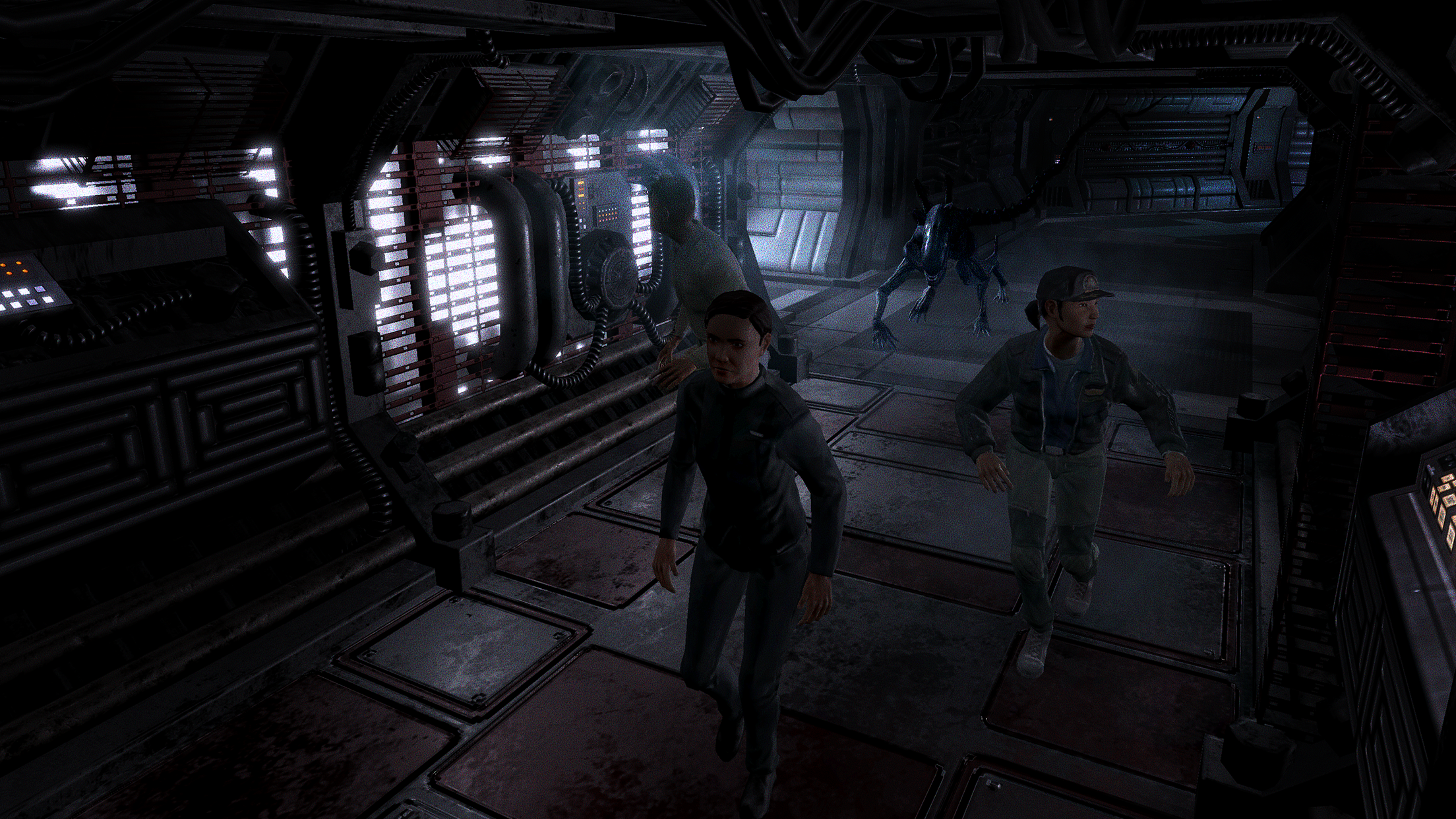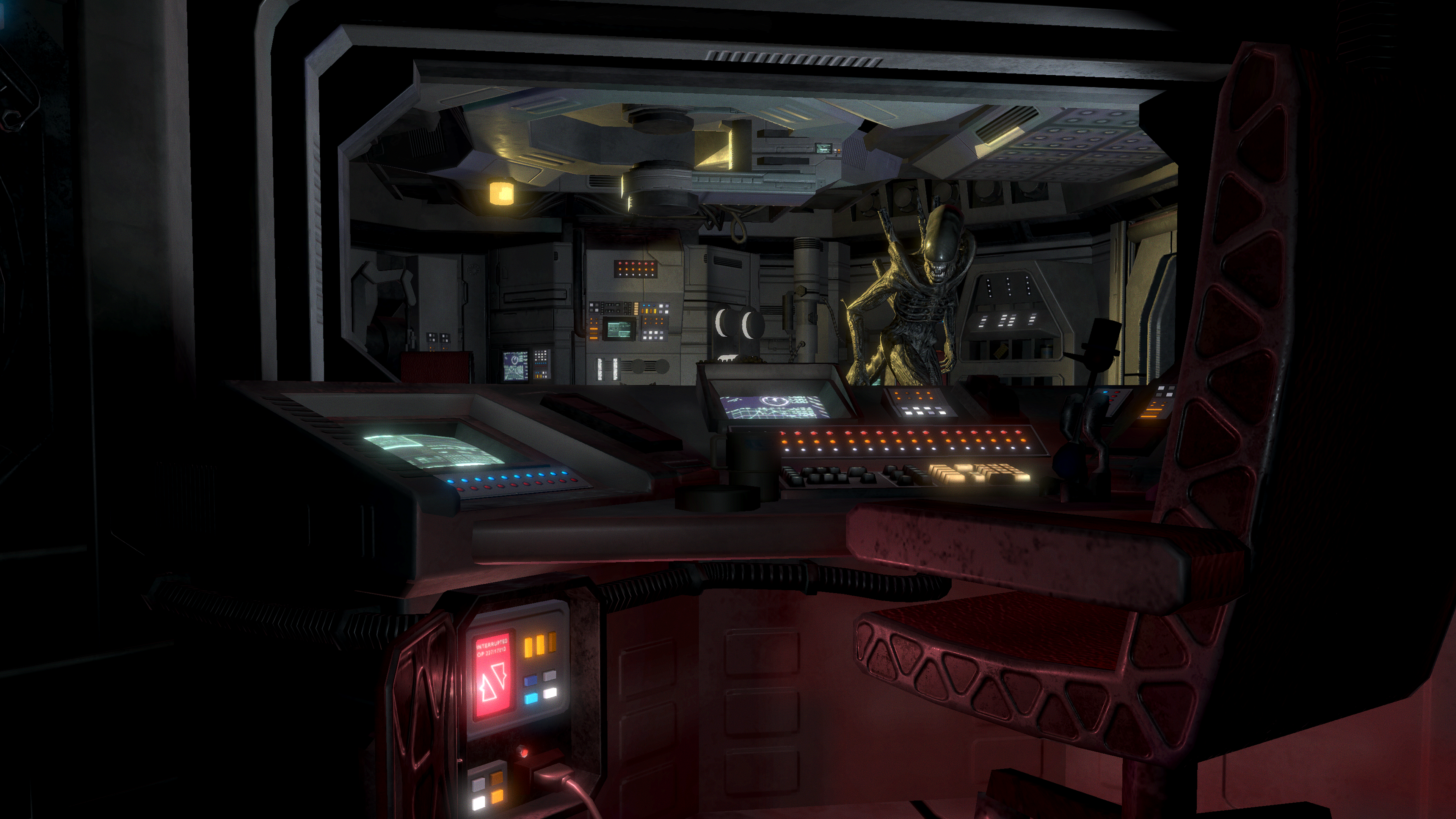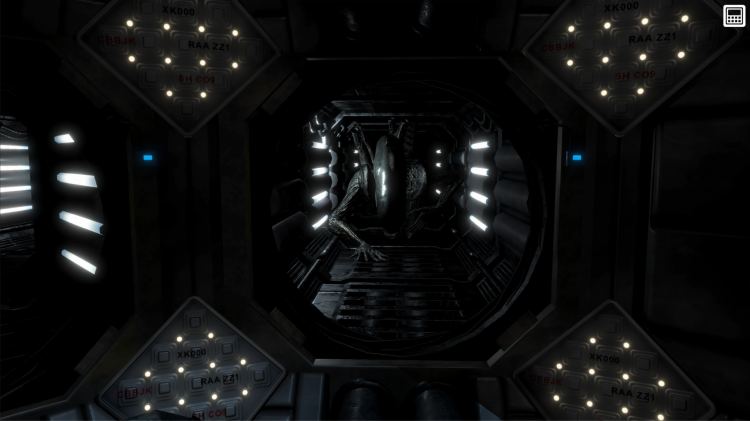A vocal minority has created a convincing narrative that has a lot of us assuming that mobile spinoffs of PC and console games must be vapid, cynical cash grabs. I can’t claim to be above the peanut gallery’s influence here. As I walked into an Alien Blackout demo (coming to the Apple App Store, Google Play, and Amazon Appstore on January 24), a chunk of my brain cells were convinced this was going to be nothing more than a mobile port of Alien Isolation.
But you know what they say about assumptions … you damned well should by now. Gawd knows online media has used the ass-out-of-you-and-me cliche intro a couple million times. We should all know this lesson by now. Right? But that’s kind of a funny thing about such lessons: Some of us must relearn them over and over again.
And in the case of Alien Blackout, developers Rival Games and Theory Interactive and publishers FoxNext/D3 Go! are about to remind us that the platform doesn’t dictate the quality of the product. More specifically, mobile doesn’t automatically equal suck for triple-A franchises. And more broadly, don’t just assume what a game is until you’re playing it.
Alien Trap/Double Isolation

Above: “Hey lady whacha readin’? You’re spamming the Internet with hate over a mobile game? Granted, I’m a mindless killing machine, but WTF is wrong with you!?”
If you’re fishing for a quick one-line hot-take, here you go: Think Night Trap/Double Switch meets Alien Isolation.
If you Ctrl-C that line into your brain and drop it in public with a tone of smarmy derision, then you’ve missed the point. Because like Night Trap and Double Switch, Alien Blackout is pretty damned clever.
You take the role of Amanda Ripley (star of Alien Isolation, daughter of Ellen Ripley), who has been Newt-ing it up in a makeshift anxiety hovel located in the upper air ducts of the Mendel space station. How she wound up there after the fatal conclusion of Isolation, I can only guess. What matters is that Amanda survives, if cooped up in duct work is considered “living.”

Above: This is one hell of a sharp image for a CRT monitor.
She has access to the station’s security systems, but that doesn’t really mean much since theres an angry xenomorph still skulking-‘n’-murdering around the facilities.
It’s a stale mate: Amanda can control doors and peep through security cameras, but can’t step foot out of her hidey-hole in the air ducts. The alien can roam around like it owns the joint, but it’s frustratingly OCD about killing everything, and knowing Amanda is still alive on the station somewhere is driving the creature up the walls.
To the relief of both Amanda and the Xenomorph, a ship full of human beings from Weyland Yutani docks with the station. They’re on a pit-stop and need supplies to complete their journey, Amanda is in need of someone to transport her the hell out of this nightmare, and the monster is in need of making alive things splatter to death. It’s a situation that all parties could acclimate to.
Alien Manipulation

Above: “Hey, Amanda, it’s the Xenomorph again. Check out my impression of these guys: ‘OMG tip-toe and the scary monster won’t kill me.’ Did you see my impression? No? Stop spamming Twitter about mobile games, Amanda! Let it go! I gotta eat now. BBIAB.”
On my short hands-on session with the iPad version of Alien Blackout, I could switch between two main views: Amanda’s first-person perspective of her depressing squat spot in the air ducts, and the CRT terminal screen that she hacked into the station’s security systems.
The terminal screen is Amanda’s eyes and ears within the station, enabling her to manipulate doors, motions sensors, and view camera feeds. It’s also her main line of communication with the unfortunate souls that are wandering around out in the open.
Amanda can draw out routes to objectives for the humans to follow, as well as bark order on when they should be sneaking, switch gears to haul ass, or hide and tremble in silence. Although communication is healthy for any human relationship, it also works in the Xenomorph’s favor as well.
Too much chatter draws attention towards Amanda’s location in the duct works. If Amanda is gabbing away with her new human friends below, yet hasn’t seen the creature for a bit, and there is rumbling in the ducts, it’s probably time for her to switch to first-person view, and close the hatch to her hiding spot.
The rumbling of the monster scraping-‘n’-clawing towards Amanda does have some distinct audible cue, but the sound design meshes just enough with the noises the Xenomorph makes traveling through the ducts to other locations in the station, that Amanda really has to be on her toes (or … ears?).

Above: “Amanda could’ve saved you, but she’s busy railing against the industry’s obsession with mobile games instead of keeping doors closed.”
It was easy to feel like everything was going fine while flipping through camera feeds and discussing objectives with the humans below, just to suddenly realize there was no trace of the creature — because it’s squatting in front of Amanda, with a huge grin, inviting her for dinner.
If Amanda does manage to kick her hatch closed before the Xenomorph snags her, power to the door comes from the same energy source as the hacked security terminal. This means you can either shut the door, or communicate with the humans and manipulate the station’s systems. But not both.
As the creature scurries away, there is a tense moment of waiting for the terminal to reboot. It’s in this phase that Amanda just has to pray that the last thing she told her human companions wasn’t, “Stand underneath a duct opening. And by the way: make a lot of noise.”
Being energy-conscious plays a larger role back at the security terminal. While Amanda can manipulate doors, sensors, and cameras throughout the environment, she can’t turn on everything at the same time. So if Amanda turns on multiple motion sensors in several hallways to track possible alien movement, the number of doors that she can close decreases.

Above: “Amanda. I’ve killed again. I’m starting to question the moral implications of my existence. I mean … is this all my life is about? Hissing. Killing. I don’t even really eat my victims anymore.”
Sensors also aren’t in every hallway, and cameras are often locked in specific positions.
Keeping all of these things straight, while executing a plan-of-action, becomes a frantic puzzle of micro-management. Where’s the Xenomorph? Where are the damned humans going? I’ve found the monster, but the humans need this door open, and I’m trying to use that energy on these doors on the other side of the map to draw the creature away. I’ll need to turn this sensor off, but now I gotta rely on a camera to let me know if the alien is still falling for my door manipulation. Wait! Where the hell did it go?
To add to the chaos, there is also a time limit to completing the seven levels in Alien Blackout. Being reckless and making humans run to objectives willy-nilly guarantees they’ll get ripped apart. But being too careful will see everyone dead by time limit as well. It’s an intriguing exercise in risky gambles and immediately answering the door when opportunity knocks (and closing it when it’s the Xenomorph) that’s entertainingly stressful.
Alien Assumptions
Hey, I sympathize with the whole knee-jerk reaction towards mobile spinoffs. I’ve run into my fair share of used-car salesman in this industry.
But the Alien Blackout demo wasn’t what I was afraid it was going to be. It’s a legit standalone Alien game that happens to be on a mobile platform.
As I said in the beginning, Alien Blackout is a lesson in assumptions. They’re stupid. I’m stupid for having them. Do yourselves a favor, really investigate a game before judging it harshly, and you’ll avoid being stupid as well.

